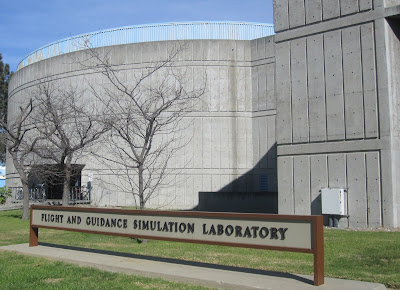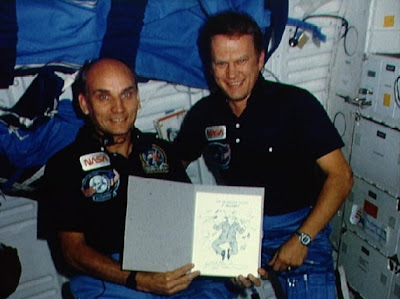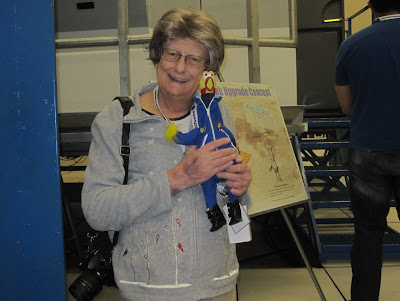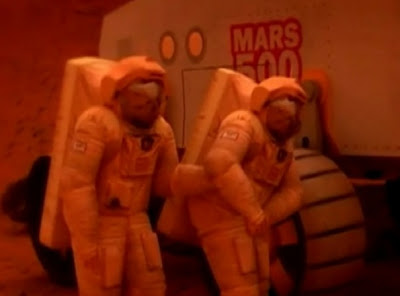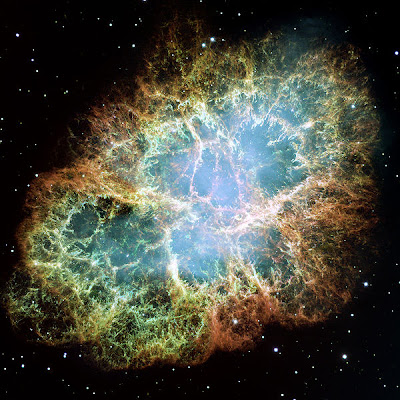Okay... final post for SimLabs! I meant to upload this material yesterday, as a sequel to Bo Bobko's explanation of simulations... but got a bit side-tracked because some Shuttle or other was launching ;)
Here I am in the Flight Simulation Lab (the building that houses the VMS) with @SpaceKate, a lovely young writer and space enthusiast from London who came to America for the original STS-133 Tweetup -- but never went home! When the November launch was scrubbed, she stuck around hoping for a new launch window, and has been fortunate enough to visit Ames, SpaceX and the Jet Propulsion Lab in the meantime. Talk about a dream vacation!

@SpaceKate and @Pillownaut
In a rare happy ending, SpaceKate did see the Shuttle launch yesterday when Discovery STS-133 took off from the Cape, as KSC kindly held a "Repeat Tweetup".
Rewind a week back to when we chatted at Ames: together we took a "tour" of the Lunar Lander cab with another Tweep, and a SimLabs employee. To put it mildly, four people inside that simulator is a tight squeeze! We tried to take video footage inside the cockpit, but I'll warn in advance that if you are claustrophobic, you probably shouldn't watch this.
The Lander interior is designed so the screens are the only thing truly lit, but I was able to focus upon seat restraints, joystick controllers, and so on. Our cohort laughed briefly at the slender amount of padding, because this contraption sure wouldn't be a very comfortable ride!
The consoles and controls are enticing, and a "rerun" of a previous simulation was showing where someone had landed on the moon at precise coordinates. Toward the end, I noticed the software accounted for a visual Earth Rise, which I thought was a great touch!

SimLabs Mission Control Rooms
I tried to back out of the Lunar Lander while I was still filming -- not my best idea ever, since you can see in the top photo that the the cab is in a very brightly lit warehouse, and I was momentarily blinded.
Each of the different types of cabs can be loaded into the lateral carriage of the Vertical Motion Simulator (VMS), and then varied flight simulations can be run with different ranges of movement in "six degrees of freedom". Say it with me now... Pitch, Yaw, Roll!




